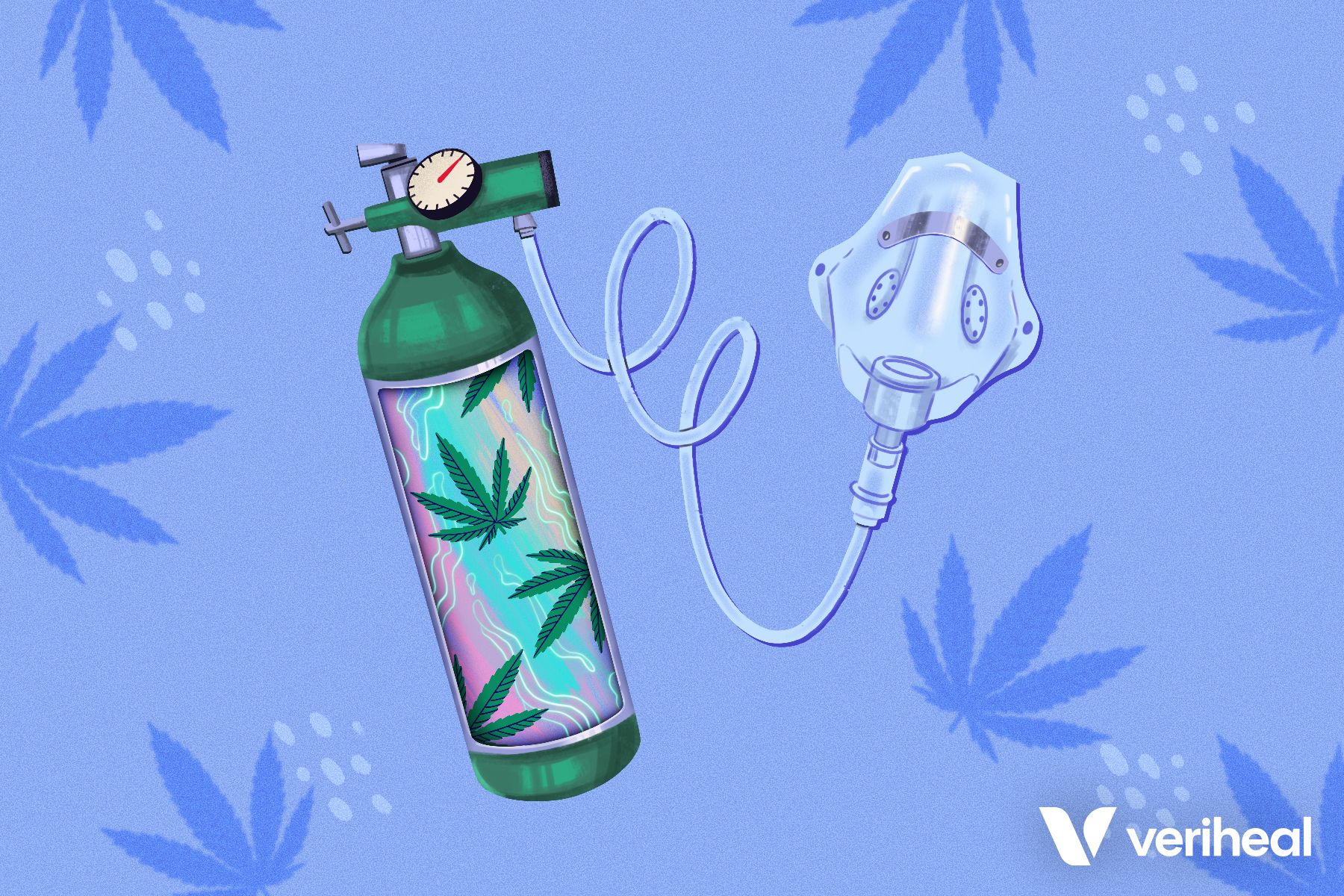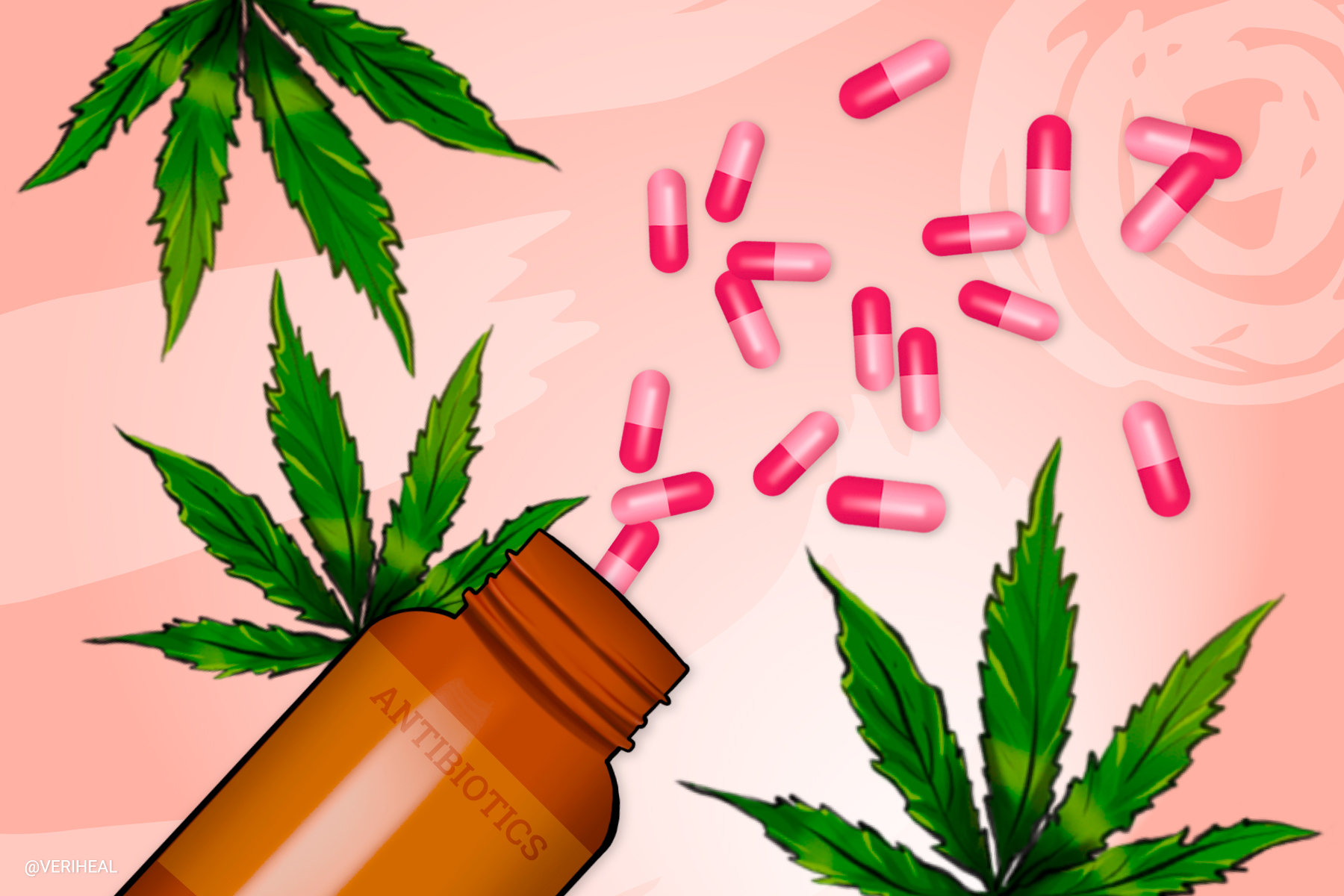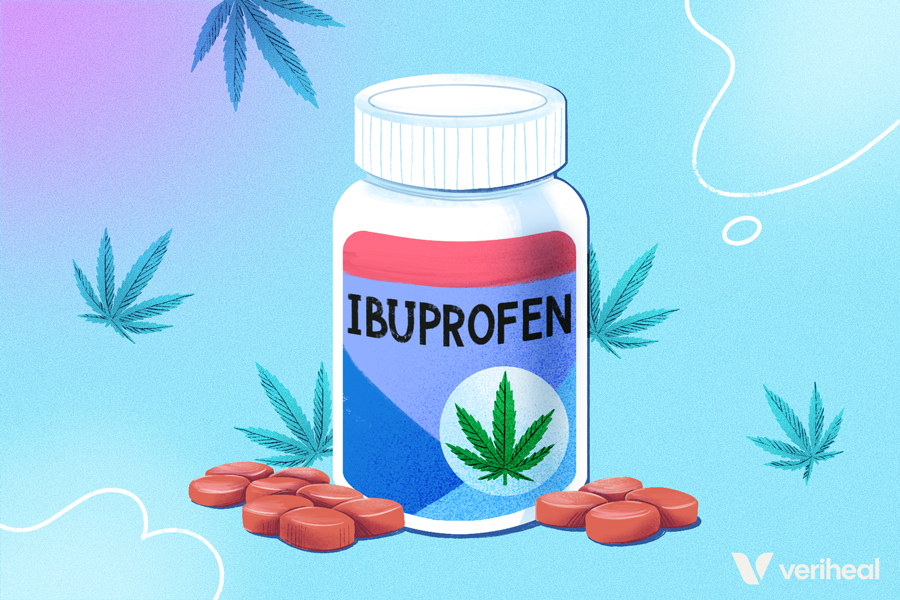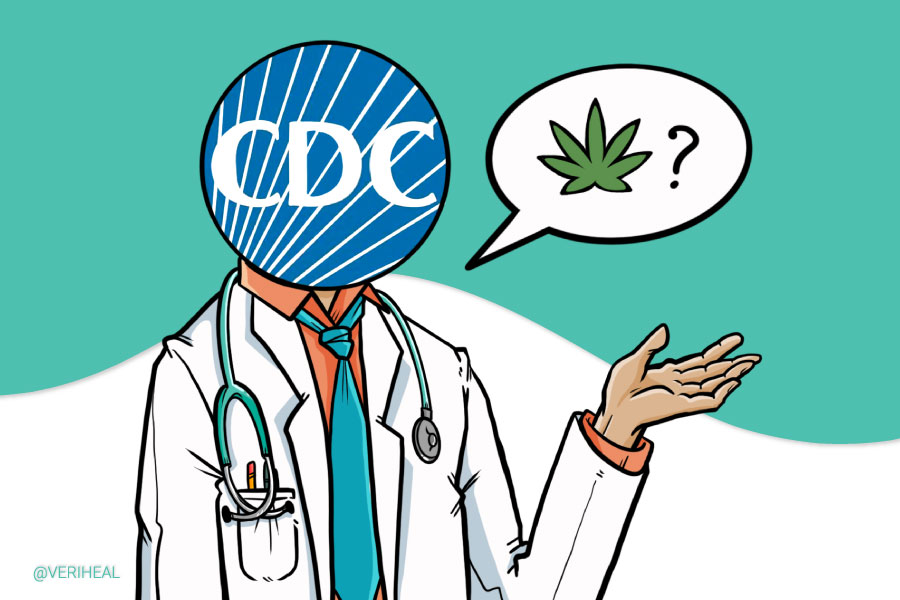Tuberculosis and Medical Cannabis Treatment

A chronic cough, fever, chills, and coughing up blood are the telltale signs of tuberculosis (TB) infections that most Americans are aware of. Unfortunately, these symptoms are just the tip of the iceberg when it comes to this highly contagious infection caused by the bacteria Mycobacterium tuberculosis. Tuberculosis is treated with antibiotics, but it is becoming more and more drug-resistant (19). Some believe that medical cannabis may hold some answers to treating drug-resistant TB.
When medical cannabis is inhaled, or taken orally, it begins interacting with a system in the body called the endocannabinoid system (ECS). This system is activated by cannabinoids including Δ9-tetrahydrocannabinol (THC), cannabidiol (CBD), and cannabigerol (CBG). When the cannabinoids are ingested, they make contact with a variety of receptors including cannabinoid receptors CB1 & CB2, G protein-coupled receptors (GPCRs), and transient vanilloid receptors (TRPVs) that serve a larger role in the endocannabinoidome.
When these receptors are activated, they increase and decrease the levels of fatty-based neurotransmitters in the body called endocannabinoids. Endocannabinoids send signals to other portions of the body for a variety of reasons. They are responsible for pain perception and how efficiently the immune system functions.
- Terpenes and Bacterial Infections
- Cannabis & Bacteria
- What Does the Science Say?
- A Note About Medical Cannabis & Tuberculosis
- Does Cannabis Cause Tuberculosis?
- What is Tuberculosis?
- States of TB Infections
- Types of Extrapulmonary Tuberculosis
Terpenes & Bacterial Infections
Medical cannabis contains a variety of chemical compounds that have medicinal effects on the body. Cannabis contains over 120 cannabinoids and 200 terpenes, which are natural compounds responsible for smells in plants such as the smell associated with lavender (1). These compounds all work together to produce the entourage effect. Both cannabinoids and terpenes have been found to have antimicrobial effects (28).
The following terpenes that are found in medical cannabis have been shown to have bacteria-fighting properties. Additionally, many of these terpenes are active components of essential oils and may have other medicinal and synergistic properties (30).
- Myrcene
- Limonene
- Alpha-Pinene
- β-Pinene
- β-Caryophyllene
- Caryophyllene
Please check our page on sepsis for more information.
Cannabis & Bacteria
There are several different theories about medical cannabis and its role in fighting bacteria. Some researchers believe that cannabinoids are effective against bacteria due to their chemical structure being similar to that of antibiotics (30). It is interesting to note that cannabinoids can improve the effectiveness of antibiotics in antibiotic-resistant bacteria and vice versa (30). Antibiotics have also been shown to boost the antimicrobial benefits of cannabis.
Another theory has to do with how cannabis may be able to alter the permeability of the cellular wall of bacteria (30, 28). Researchers have found that CBG along with the terpenes β-caryophyllene and limonene can attack the cell wall of bacteria, which causes cellular components of the bacteria to leak out (28).
Additionally, CBD has been found to disrupt bacterial cellular communication (28). This is because CBD has the ability to block the release of bacterial membrane vesicles. Membrane vesicles are particles released by bacteria that are responsible for transporting virulence factors that cause the bacteria to spread. Membrane vesicles also intercept immune cells called bacteriophages as well as play a role in fighting against antibiotics, and other anti-immune system factors (34).
Research from 2020 conducted on several different types of bacteria found that the endocannabinoid anandamide (AEA) and an endocannabinoid-like compound called arachidonoyl serine (AraS) are able to inhibit the growth of biofilm (30). Biofilm is a slimy, thin layer of bacteria that grows on various surfaces in the body. It is more difficult to treat than typical bacterial infections.
What Does the Science Say?
A 2016 study examining the effects of CB2 receptor agonists β-Caryophyllene and GP1a in mice with bovine TB (bTB) showed some promising results (4). These mice were pretreated with β-Caryophyllene or GP1a before lung inflammation was induced by Mycobacterium bovis. This bacteria causes bTB and is similar to M. tuberculosis which causes TB in humans. This study looked at neutrophils, a type of immune cell that the body sends to fight infections.
In samples extracted from the mice, researchers found that mice who were given the CB2 agonists had increased levels of neutrophils in comparison to control samples (4). This is important because neutrophils are responsible for attacking bacteria and viruses in the body. The results showed that the CB2 agonist pretreatments activated the immune system’s release of neutrophils, which then helps target bacteria quicker.
Though this research was done in mice and using bovine tuberculosis, it shows that the CB2 receptor could be a good therapeutic target for treating TB in humans. It is interesting to note that similar research in mice using β-Caryophyllene has also shown promising results for persistent inflammatory pain (13).
Medical marijuana has been shown to have the ability to kill M. tuberculosis and other forms of gram-positive bacteria (30). Gram-positive bacteria have a thicker cellular wall as opposed to gram-negative bacteria (29). The best example of a gram-positive bacteria that cannabis may be useful for is in MRSA infections.
Cannabis has positive effects against Staphylococcus aureus and Streptococcus species of bacteria that are responsible for several types of respiratory infections (28). Research regarding the antibacterial effects of cannabis against S. aureus is very important and warrants more research. This is because this bacteria causes methicillin-resistant Staphylococcus aureus (MRSA), a drug-resistant superbug that is becoming increasingly harder to treat (30).
A Note About Medical Cannabis & Tuberculosis
It is important to note that doctors cannot recommend using medical cannabis over antibiotics for the treatment of tuberculosis and other bacterial infections. Much of the research available is performed in vitro, meaning it is using cannabinoids to target bacteria in tissue or blood samples.
Some research regarding lung infections also suggests that smoking anything, including tobacco and cannabis causes inflammation of the airway and may lead to chronic cough and bronchitis symptoms (20). It is not advisable to use an inhaled method of medical cannabis while you have an active tuberculosis infection or other serious cardiopulmonary illness.
Does Cannabis Cause Tuberculosis?
A 2019 review focusing on cannabis use and the risk of tuberculosis evaluated information about whether cannabis is potentially a major risk factor in TB outbreaks (17). The studies that focused on latent TB infections showed some evidence that cannabis use can be associated. However, the remaining studies focused on active TB and cannabis use and found that there was no evidence for association.
It is important to note the lack of research in recent years regarding the use of cannabis and tuberculosis. However, it is important for you to make your decision to use medical cannabis, considering all the available information.
What is Tuberculosis?
Tuberculosis (TB) is an infection caused by a particular bacteria called Mycobacterium tuberculosis (19). This bacteria is spread through water droplets formed by talking, coughing, or sneezing by someone infected with M. tuberculosis. TB is considered highly contagious. Between 90-95% of patients infected with the bacteria do not develop an active infection.
The typical symptoms of TB include (2):
- Chronic cough
- Blood cough or hemoptysis
- Weight loss or cachexia
- Swollen lymph nodes (lymphadenopathy)
- Low-grade fever
- Night sweats
States of TB Infections
It is important to note that it is possible to have a TB infection and have symptoms, and it is possible to be asymptomatic but still be able to spread the infection. There are two main states of TB, active TB infection and latent TB. It is also possible for tuberculosis to be reactivated in the body (19).
Active Tuberculosis
Active tuberculosis infections are caused by M. tuberculosis after a patient has come into contact with the bacteria (19). This is the state of the infection that causes symptoms in the body. Sometimes an active infection can be described as a primary infection. This means that it is the first time a patient has come in contact with the virus and the infection begins.
Primary TB infections begin by growing and creating an area known as the Ghon focus (19). It infects the middle portion of the lungs. Primary TB typically causes latent infections in most patients.
The risks for developing an active TB infection include the following (19):
- Having an existing HIV infection
- Having a chronic lung disease
- Being immunocompromised based on a medical condition or from taking immunosuppressive medications
- Using tobacco products or intravenous drugs
- Social economic factors including poverty and malnutrition (2)
- Having diabetes
- Indoor pollution
- Having silicosis, a type of pulmonary fibrosis
- Having end-stage kidney disease
- Previously undergoing an intestinal bypass or gastrectomy surgery
- Having a chronic malabsorption syndrome
- Having head or neck cancer (16)
- Previously undergoing an organ transplant (16)
20-30% of patients with active TB go on to develop extrapulmonary tuberculosis (EPTB) (18). EPTB infections can spread outside of the lungs and infect the head, spine, bones, muscles, gastrointestinal tract, and other parts of the body.
A patient may also have a secondary TB infection, which occurs when the bacteria has been reactivated in the body (19). This reactivation can be seen in patients with a parasitic infection called malaria. It is also seen with the chickenpox virus, which causes shingles when it is reactivated. In secondary TB, bodily tissue reactions to the infection are more severe and patients usually have cavities that form from the bacteria in the upper portion of the lungs (2).
Latent Tuberculosis
A latent TB infection (LTBI) occurs when a patient has been exposed to the bacteria and tests positive, but they do not show any symptoms of being sick. These patients cannot spread tuberculosis, but they may develop an active infection if they do not receive treatment in order to kill the bacteria (18).
It is important to note that latent TB does not always cause an active infection. Some patients can live their whole life without getting an active TB infection (18). On the other hand, it is possible for the bacteria to become active in patients with a weakened immune system. When the bacteria is active patients are considered to have the disease called tuberculosis.
There is a 5-10% risk of a patient with latent TB developing secondary tuberculosis. These infections usually start in the apices, or top section of the lungs (19). Secondary TB typically stays locally in this portion of the lungs.
Types of Extrapulmonary Tuberculosis
Unfortunately, it is possible for an active TB infection to spread to other areas of the body. This is known as extrapulmonary tuberculosis (EPTB), which means it occurs in addition to the lungs (18, 35)). EPTB infections are classified by the areas of the body where the bacteria has spread. They are detailed below (18).
EPTB of the Head & Neck
- Tuberculosis meningitis– a serious infection of the brain
- Scrofula or tuberculosis lymphadenitis- an infection in the lymph nodes of the neck resulting in lumps
- Ocular tuberculosis- a TB infection in the eye, eyelids, or conjunctiva (the pink tissue on the inside corner of the eye)
- Oral tuberculosis- TB infection of the mouth resulting in ulcers on the gums and tongue
EPTB of the Thorax or Chest
- Plural tuberculosis- TB infection that has spread to the pleura, or tissue of the lungs. It results in fluid in the lungs
- Tuberculous Pericarditis- this occurs in the pericardium, which is two thin layers of tissue located around the heart (35)
EPTB of the Skin, Muscle, & Bone
- Cutaneous tuberculosis- this is TB that infects the skin and results in skin lesions
- Musculoskeletal tuberculosis- an infection of the bones, joints, muscles, and other soft tissues of the body
EPTB of the Abdomen & Genitourinary System
- Abdominal tuberculosis- a TB infection that has spread to the GI tract, lymph nodes, or peritoneum (lining of the abdominal cavity)
- Gastrointestinal tuberculosis- a type of abdominal tuberculosis
- Genitourinary tuberculosis- TB infection in the urinary tract or genital organs
Miliary Tuberculosis
- This type of TB spreads in the body and affects one or more organs
- Commonly infects the lungs, bone marrow, or liver. It can spread to other areas of the lung, spinal cord, or heart (35)
Note: Veriheal does not intend to give this as professional medical advice. Do not attempt to self-diagnose, or prescribe treatment based on the information provided on this page. Always consult a physician before making any decision on the treatment of a medical condition.
1. A novel phytocannabinoid isolated from Cannabis sativa L. with an in vivo cannabimimetic activity higher than Δ9-tetrahydrocannabinol: Δ9-Tetrahydrocannabiphorol | Scientific Reports. (n.d.). Retrieved June 6, 2023, from https://www.nature.com/articles/s41598-019-56785-1
2. Adigun, R., & Singh, R. (2023). Tuberculosis. In StatPearls. StatPearls Publishing. http://www.ncbi.nlm.nih.gov/books/NBK441916/
3. Alzayer, Z., & Al Nasser, Y. (2023). Primary Lung Tuberculosis. In StatPearls. StatPearls Publishing. http://www.ncbi.nlm.nih.gov/books/NBK567737/
4. Andrade-Silva, M., Correa, L. B., Candéa, A. L. P., Cavalher-Machado, S. C., Barbosa, H. S., Rosas, E. C., & Henriques, M. G. (2016). The cannabinoid 2 receptor agonist β-caryophyllene modulates the inflammatory reaction induced by Mycobacterium bovis BCG by inhibiting neutrophil migration. Inflammation Research, 65(11), 869–879. https://doi.org/10.1007/s00011-016-0969-3
5. Appendino, G. (2020). The early history of cannabinoid research. Rendiconti Lincei. Scienze Fisiche e Naturali, 31(4), 919–929. https://doi.org/10.1007/s12210-020-00956-0
6. Appendino, G., Gibbons, S., Giana, A., Pagani, A., Grassi, G., Stavri, M., Smith, E., & Rahman, M. M. (2008). Antibacterial cannabinoids from Cannabis sativa: A structure-activity study. Journal of Natural Products, 71(8), 1427–1430. https://doi.org/10.1021/np8002673
7. Bolla, J. R. (2020). Targeting MmpL3 for anti-tuberculosis drug development. Biochemical Society Transactions, 48(4), 1463–1472. https://doi.org/10.1042/BST20190950
8. Cannabinoid Receptors and the Endocannabinoid System: Signaling and Function in the Central Nervous System—PMC. (n.d.). Retrieved April 26, 2023, from https://www.ncbi.nlm.nih.gov/pmc/articles/PMC5877694/
9. Cardona, P.-J. (2018). Pathogenesis of tuberculosis and other mycobacteriosis. Enfermedades Infecciosas Y Microbiologia Clinica (English Ed.), 36(1), 38–46. https://doi.org/10.1016/j.eimc.2017.10.015
10. Cazzaniga, G., Mori, M., Chiarelli, L. R., Gelain, A., Meneghetti, F., & Villa, S. (2021). Natural products against key Mycobacterium tuberculosis enzymatic targets: Emerging opportunities for drug discovery. European Journal of Medicinal Chemistry, 224, 113732. https://doi.org/10.1016/j.ejmech.2021.113732
11. CDCTB. (2019, June 19). Tuberculosis (TB)- Basic TB Facts. Centers for Disease Control and Prevention. https://www.cdc.gov/tb/topic/basics/default.htm
12. CDCTB. (2020, December 11). Tuberculosis (TB)—Latent TB Infection and TB Disease. Centers for Disease Control and Prevention. https://youtu.be/wA_fObLY6GE
13. Ceccarelli, I., Fiorenzani, P., Pessina, F., Pinassi, J., Aglianò, M., Miragliotta, V., & Aloisi, A. M. (2020). The CB2 Agonist β-Caryophyllene in Male and Female Rats Exposed to a Model of Persistent Inflammatory Pain. Frontiers in Neuroscience, 14, 850. https://doi.org/10.3389/fnins.2020.00850
14. Di Marzo, V., Fontana, A., Cadas, H., Schinelli, S., Cimino, G., Schwartz, J.-C., & Piomelli, D. (1994). Formation and inactivation of endogenous cannabinoid anandamide in central neurons. Nature, 372(6507), Article 6507. https://doi.org/10.1038/372686a0
15. Fact Sheets | General | Latent TB Infection vs. TB Disease | TB | CDC. (2022, August 17). https://www.cdc.gov/tb/publications/factsheets/general/ltbiandactivetb.htm
16. Fact Sheets | General | Tuberculosis: General Information | TB | CDC. (2022, August 17). https://www.cdc.gov/tb/publications/factsheets/general/tb.htm
17. French, C. E., Coope, C. M., McGuinness, L. A., Beck, C. R., Newitt, S., Ahyow, L., Hickman, M., & Oliver, I. (2019). Cannabis use and the risk of tuberculosis: A systematic review. BMC Public Health, 19(1), 1006. https://doi.org/10.1186/s12889-019-7127-0
18. Gopalaswamy, R., Dusthackeer, V. N. A., Kannayan, S., & Subbian, S. (2021). Extrapulmonary Tuberculosis—An Update on the Diagnosis, Treatment and Drug Resistance. Journal of Respiration, 1(2), Article 2. https://doi.org/10.3390/jor1020015
19. Jilani, T., Avula, A., Gondal, A. Z., & Siddiqui, A. (2023). Active Tuberculosis. StatPearls. https://www.statpearls.com/ArticleLibrary/viewarticle/17136
20. Joshi, M., Joshi, A., & Bartter, T. (2014). Marijuana and lung diseases. Current Opinion in Pulmonary Medicine, 20(2), 173. https://doi.org/10.1097/MCP.0000000000000026
21. Kumar, N. P., George, P. J., Kumaran, P., Dolla, C. K., Nutman, T. B., & Babu, S. (2014). Diminished Systemic and Antigen-Specific Type 1, Type 17, and Other Proinflammatory Cytokines in Diabetic and Prediabetic Individuals With Latent Mycobacterium tuberculosis Infection. The Journal of Infectious Diseases, 210(10), 1670–1678. https://doi.org/10.1093/infdis/jiu329
22. Lee, S. H. (2016). Tuberculosis Infection and Latent Tuberculosis. Tuberculosis and Respiratory Diseases, 79(4), 201–206. https://doi.org/10.4046/trd.2016.79.4.201
23. Mungmunpuntipantip, R., & Wiwanitkit, V. (2020). Marijuana and Tuberculosis and Alteration of Th1/Th17 Responses: Advantage or Disadvantage or Neutral? Journal of Medical Sciences, 40(5), 203. https://doi.org/10.4103/jmedsci.jmedsci_204_19
24. (PDF) Antibacterial Cannabinoids from Cannabis sativa: A Structure-Activity Study. (n.d.). Retrieved April 25, 2023, from https://www.researchgate.net/publication/275830072_Antibacterial_Cannabinoids_from_Cannabis_sativa_A_Structure-Activity_Study
25. Posokhov, Y. O., Rodnin, M., Kyrychenko, A., Contino, C., Pucci, B., & Ladokhin, A. S. (2010). Platform BB: Membrane Protein Structure II.
26. Rashid, F., Butt, F., Nasreen, S., Nisa, F., Kanwal, Z., Kaleem, A., & Andleeb, S. (2016). IN VITRO ANTIMICROBIAL AND ANTIOXIDANT ACTIVITIES OF TWO MEDICINAL PLANTS AGAINST SOME CLINICALLY IMPORTANT BACTERIA. https://www.semanticscholar.org/paper/IN-VITRO-ANTIMICROBIAL-AND-ANTIOXIDANT-ACTIVITIES-Rashid-Butt/7b12eb4c613bfabbd78bf722cb9e718f576d5ea1
27. Reiss, C. S. (2010). Cannabinoids and Viral Infections. Pharmaceuticals, 3(6), Article 6. https://doi.org/10.3390/ph3061873
28. Saleemi, M. A., Yahaya, N., Zain, N. N. M., Raoov, M., Yong, Y. K., Noor, N. S., & Lim, V. (2022). Antimicrobial and Cytotoxic Effects of Cannabinoids: An Updated Review with Future Perspectives and Current Challenges. Pharmaceuticals, 15(10), Article 10. https://doi.org/10.3390/ph15101228
29. Sizar, O., Leslie, S. W., & Unakal, C. G. (2023). Gram Positive Bacteria. In StatPearls. StatPearls Publishing. http://www.ncbi.nlm.nih.gov/books/NBK470553/
30. The antimicrobial effect behind Cannabis sativa—Schofs—2021—Pharmacology Research & Perspectives—Wiley Online Library. (n.d.). Retrieved April 26, 2023, from https://bpspubs.onlinelibrary.wiley.com/doi/full/10.1002/prp2.761
31. Tuberculosis. (n.d.). [Text]. National Library of Medicine. Retrieved April 22, 2023, from https://medlineplus.gov/tuberculosis.html
32. Tuberculosis TB. (n.d.). Retrieved April 22, 2023, from https://www.hopkinsmedicine.org/health/conditions-and-diseases/tuberculosis-tb
33. Tuberculosis (TB) | American Lung Association. (n.d.). Retrieved April 22, 2023, from https://www.lung.org/lung-health-diseases/lung-disease-lookup/tuberculosis
34. Types and origins of bacterial membrane vesicles | Nature Reviews Microbiology. (n.d.). Retrieved April 26, 2023, from https://www.nature.com/articles/s41579-018-0112-2
35. Types of Tuberculosis and Tuberculosis Tests. (2019, February 26). Healthline. https://www.healthline.com/health/types-of-tuberculosis
36. VanDolah, H. J., Bauer, B. A., & Mauck, K. F. (2019). Clinicians’ Guide to Cannabidiol and Hemp Oils. Mayo Clinic Proceedings, 94(9), 1840–1851. https://doi.org/10.1016/j.mayocp.2019.01.003
37. Verma, R., Hoda, F., Arshad, M., Iqubal, A., Siddiqui, A. N., Khan, M. A., Haque, S. E., Akhtar, M., & Najmi, A. K. (2021). Cannabis, a Miracle Drug with Polyvalent Therapeutic Utility: Preclinical and Clinical-Based Evidence. Medical Cannabis and Cannabinoids, 4(1), 43–60. https://doi.org/10.1159/000515042
38. Whiting, P. F., Wolff, R. F., Deshpande, S., Di Nisio, M., Duffy, S., Hernandez, A. V., Keurentjes, J. C., Lang, S., Misso, K., Ryder, S., Schmidlkofer, S., Westwood, M., & Kleijnen, J. (2015). Cannabinoids for Medical Use: A Systematic Review and Meta-analysis. JAMA, 313(24), 2456–2473. https://doi.org/10.1001/jama.2015.6358
39. Yayan, J., & Rasche, K. (2016). Damaging Effects of Cannabis Use on the Lungs. In M. Pokorski (Ed.), Advancements in Clinical Research (pp. 31–34). Springer International Publishing. https://doi.org/10.1007/5584_2016_71





